2017 was a big year for smartphones. In every way. Old glories of the past have reappeared on the market (Nokia, Blackberry and Motorola), while established companies have completely changed the face of their phones (Samsung, Apple, LG, OnePlus, HTC, Huawei).
Without mincing words, 2017 was the year of the Samsung Galaxy S8 (in its Plus variant and the "enhanced" Note 8 version) and the iPhone X. The Korean company and that of Cupertino have centralized on them all the attentions of the press. And it could not be otherwise. The Samsung S8 was among the first to present a borderless design, that is, with very thin bezels, and a screen with an aspect ratio of 18:9 (one of the many changes that took place in this 2017). Apple, for its part, after somewhat anonymous years from a design point of view launched the iPhone X, probably the most distinctive phone released in 2017.
How will 2018 smartphones look like? It's still too early to tell, but one thing is certain: companies will continue in the process of perfecting the design. Even thinner bezels to make room for bigger and bigger screens. The design will be taken to the extreme, minimizing the space for the front camera and sensors on the front of the device.
How will the smartphones coming out in 2018
Thinking that 2018 is only a transition year to a new generation of smartphones coming out in 2019, is a big mistake. 2018 could be a very important year when it comes to foldable smartphones. We already had a first taste of it in 2017, with the presentation of the ZTE Axon M, the world's first smartphone that folds and allows you to use two screens at once. But despite these features, it is not a real foldable smartphone. According to rumors that have come out in recent months, all major companies are developing phones with flexible screens. Samsung is far ahead in the development of the Galaxy X, Apple could launch an iPhone X Plus with a foldable screen and even Huawei would be far ahead in making a flexible device. We'll just have to wait a few months to see if the first smartphone with a foldable or flexible screen will be launched on the market.
Without making too many flights of fancy, let's think about what will surely happen this year. It's still hard to predict what smartphones will look like in 2018, but it's safe to say that the various companies are trying to decrease bezels even more to make room for bigger and bigger screens. All top of the range devices released in the last months of 2017 have a screen body-to-ratio (i.e. the percentage of space occupied by the display) between 80-85%. The goal for 2018 is to reach 88-90%, further reducing the bezels and leaving just enough space to insert the camera. On this direction are moving Samsung for the Galaxy S9, LG for the G7, Apple for next year's iPhone X and also Huawei for the P20.
The characteristics of the smartphones coming out in 2018
More and more performance phones with larger screens. These will be the guidelines that companies are following for the development of smartphones that will come out in 2018. In principle, the top of the range will mount a Snapdragon 845 chipset, the new processor that Qualcomm is ready to release for the first months of 2018. Among the new features worth mentioning is the LTE modem that ensures download speeds of up to 1.2Gbps and 25% better performance than the Snapdragon 835. The chipset will be made with a 10nm LPE (Low Power Early) architecture. The Snapdragon 845 will also have a micro-processor dedicated exclusively to artificial intelligence, which will become increasingly important for the smartphone world. Qualcomm is also working on a second chipset, but dedicated to mid-range smartphones (Snapdragon 6XX series): on the name, however, there is no news about it. Going back to talk about the top of the range devices coming out in 2018, the Snapdragon 845 chipset will be accompanied by at least 6GB of RAM and 128GB of internal storage. A few companies besides OnePlus might venture to mount up to 8GB of RAM, which for the time being, however, are useless on any smartphone.
As for the camera segment, next year we will see more integration between photo sensors and artificial intelligence. Huawei and Apple have already launched devices with a processor dedicated solely to artificial intelligence, and next year all top of the line devices will have it. Machine learning will allow smartphones to take images with an increasingly higher quality, especially in low light situations.
But the big news that we will be able to see on 2018 smartphones does not concern neither the photographic compartment nor the performance, but the fingerprint sensor. After the many rumors that have come out in the last few months, next year we will finally see the first smartphones with the unlocking sensor placed under the screen. Oltre al sensore per le impronte digitali sotto lo schermo, gli smartphone Android integreranno dei sensori 3D per il riconoscimento facciale simile a quello presente sull’iPhone X. Dopo questa introduzione, ecco tutti gli smartphone in uscita nel 2018.
Galaxy S9
 Fonte foto: Evan Blass
Fonte foto: Evan Blass
Ecco come sarà il Galaxy S9
Il Galaxy S9 sarà il primo top di gamma a debuttare nel 2018. Sarà il protagonista dell’evento organizzato da Samsung per il 25 febbraio durante il Mobile World Congress 2018 di Barcellona. Rispetto allo scorso anno, l’azienda sudcoreana ha deciso di anticipare l’uscita per cercare di contrapporre all’iPhone X uno smartphone dello stesso livello. Il dispositivo uscirà in due versioni: Galaxy S9 e Galaxy S9 Plus. I due dispositivi, non si differenzieranno solamente per la grandezza dello schermo, ma anche per le caratteristiche tecniche. Il Galaxy S9 dovrebbe montare il chipset Exynos 9810 (prestazioni molto simili allo Snapdragon 845) con 4GB di RAM e 64GB di memoria interna. Il Galaxy S9 Plus avrà lo stesso chipset, ma con 6GB di RAM e 128GB di spazio di archiviazione. Diverso anche il comparto fotografico. Il Galaxy S9 avrà una sola fotocamera posteriore con apertura f/1.5, mentre la versione Plus adotterà una doppia fotocamera posteriore (con la stessa apertura focale). Come lo scorso anno, il Galaxy S9 monterà uno schermo Infinity Display da 5,8 pollici, mentre il Galaxy S9 Plus avrà lo stesso tipo di display ma da 6,2”.
iPhone X 2018
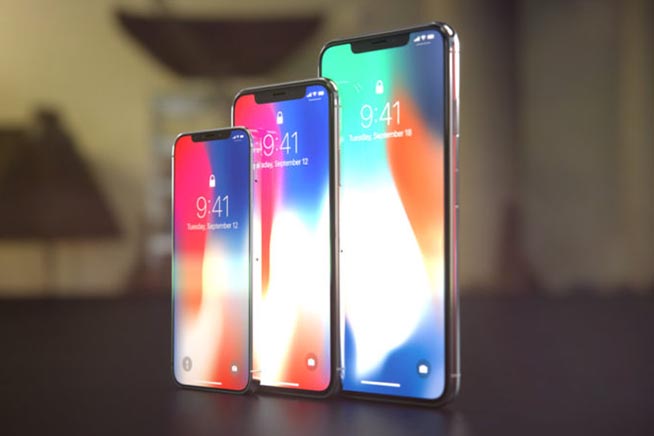 Fonte foto: Curved Labs
Fonte foto: Curved Labs
I tre modelli di iPhone X 2018
Confermarsi è sempre molto complicato. Il 2018 vedrà l’uscita di quello che gli analisti per il momento chiamano iPhone X 2018 (il nome potrebbe cambiare), la nuova versione del top di gamma di Apple. L’azienda di Cupertino starebbe sviluppando tre nuovi modelli che si differenziano per la grandezza dello schermo: si va dalla versione più piccola con display da 5,8 pollici a quella intermedia con pannello da 6,1 pollici (una novità assoluta), fino all’iPhone X Plus da 6,5 pollici. Per realizzare smartphone con pannelli sempre più grandi, Apple sarebbe già pronta a ridurre ulteriormente le cornici, estremizzando in questo modo il design dello smartphone. Sul prossimo modello dovremo vedere anche dei nuovi sensori fotografici che andranno a migliorare il Face ID e la realtà aumentata. Uscita dell’iPhone X prevista per settembre 2018.
LG G7
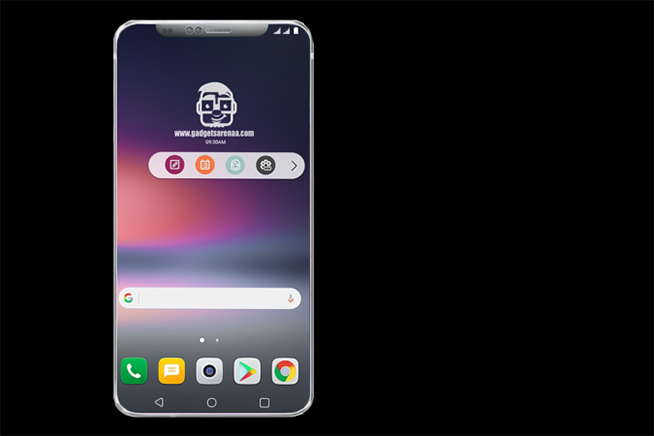 Fonte foto: Gadget Arena
Fonte foto: Gadget Arena
LG G7
Probabilmente il G6 non ha ottenuto tutto il successo che avrebbe meritato. Unveiled in February 2017 during the Mobile World Congress 2017 in Barcelona, it was the first smartphone to feature an 18:9 aspect ratio screen. The G7 is called to confirm the good things shown by its predecessor: the bezels will definitely be a bit thinner, while the rear camera will again have the wide-angle sensor. There are still few information regarding the hardware compartment the reason is quite simple. For the moment, LG would not be intent on releasing the new smartphone as soon as possible. For the Mobile World Congress 2018 in Barcelona no new presentation is expected. The South Korean company announced that its strategy has changed and it will not develop a new device every year.
Huawei P20
The first top of the range that Huawei will launch in 2018 will not be the Huawei P11. The Chinese company has decided to go a step further and call the next smartphone the Huawei P20. The device will completely change the face of the P series: the design will be borderless and very similar to what we have already seen with the Mate 10 PRO (screen with an aspect ratio of 18:9). But the most interesting feature concerns the photographic compartment. The Huawei P20 and the Huawei P20 Plus (two versions will be launched) will have as many as three rear cameras. This is a novelty for the world of smartphones. And according to rumors, the main sensor will be 40 Megapixels, while the front one will be 24 Megapixels. The design will be very similar to that of the iPhone X with the presence at the top of the screen of a notch, a small indentation where the camera and sensors for face recognition will be integrated. On board will be a new enhanced version of the Kirin 970, the chipset already seen on the Mate 10 PRO, and 4/6GB of RAM and 64/128GB of internal storage depending on the model. The Huawei P20's screen will be 5.8 inches, while the Huawei P20 Plus will have a 6.2-inch display. Entrambi avranno un rapporto d’aspetto di 18:9. I dispositivi saranno presentati il 27 marzo a Parigi, in un evento organizzato appositamente da Huawei.
OnePlus 6
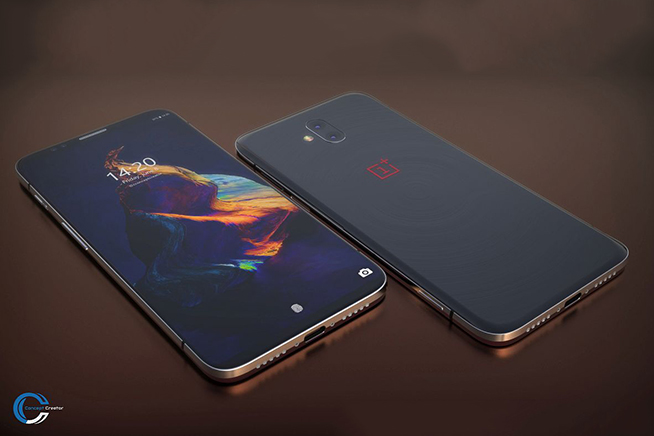 Fonte foto: Concept Creator
Fonte foto: Concept Creator
OnePlus 6
Il OnePlus 6 è uno degli smartphone più attesi del 2018. L’azienda cinese da piccola startup di provincia è diventata in pochi anni una delle società più interessanti a livello globale. Deve il suo successo a smartphone top di gamma dall’ottimo rapporto qualità-prezzo. Il OnePlus 6 seguirà il solco che l’azienda ha tracciato con il OnePlus 5T, il dispositivo lanciato a novembre dello scorso anno e che ha in parte rivoluzionato il design del dispositivo. A bordo del OnePlus 6 troveremo lo Snapdragon 845, supportato da almeno 8GB di RAM e da 128GB di memoria interna. Lo schermo sarà da 6 pollici (rapporto d’aspetto 18:9) e potrebbe avere una risoluzione QuadHD. E fino a qui nulla di nuovo, caratteristiche presenti anche in altri dispositivi in uscita quest’anno. Il OnePlus 6, però, potrebbe essere uno dei primi smartphone commercializzati in Italia ad avere il sensore per le impronte digitali nascosto sotto lo schermo. Per vedere se sarà veramente così, non bisognerà aspettare molto. Il OnePlus 6 è atteso tra maggio e giugno
Nokia 9 e Nokia 10
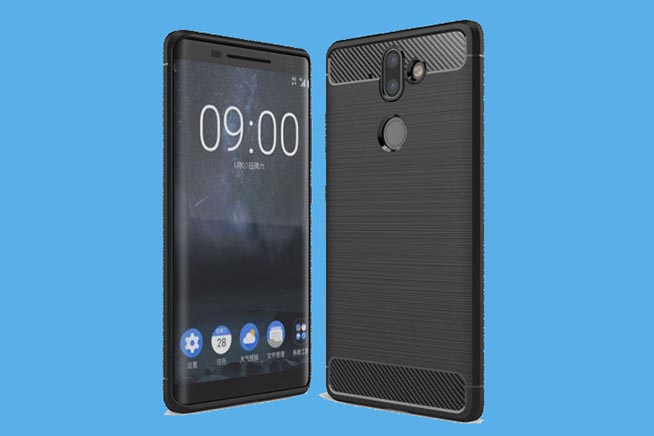 Fonte foto: Web
Fonte foto: Web
Nokia 9
Il 2017 ha rappresentato l’anno del ritorno di Nokia sul mercato degli smartphone. Come normale che fosse, l’hype generato è stato molto alto e il mercato ha accolto positivamente i nuovi telefoni dell’azienda finlandese. Per il 2018 ci si aspetta che Nokia lanci sul mercato almeno un altro paio di modelli, tra cui due top di gamma. Il primo è il Nokia 9, evoluzione del Nokia 8 da cui riprende gran parte della scheda tecnica, con l’unica differenza che lo schermo sarà da 5,5 pollici. Il Nokia 9 dovrebbe essere lanciato nei primi mesi del 2018. Verso la fine dell’anno, invece, dovrebbe fare il suo debutto il Nokia 10, smartphone dalle caratteristiche sicuramente più interessanti, a partire dal comparto tecnico: Snapdragon 845, 6GB di RAM e 64GB di memoria interna. Per il suo flagship, l’azienda finlandese dovrebbe montare uno schermo con rapporto d’aspetto 18:9. Ma la parte più interessante riguarda il comparto fotografico: il Nokia 10 sarà caratterizzato da ben cinque sensori fotografici nella parte posteriore. Le fotocamere dovrebbe essere posizionate in maniera circolare, ma non si sa ancora bene come funzioneranno. Il comparto fotografico sarà realizzato dall’azienda Carl Zeiss.
Samsung Galaxy Note 9
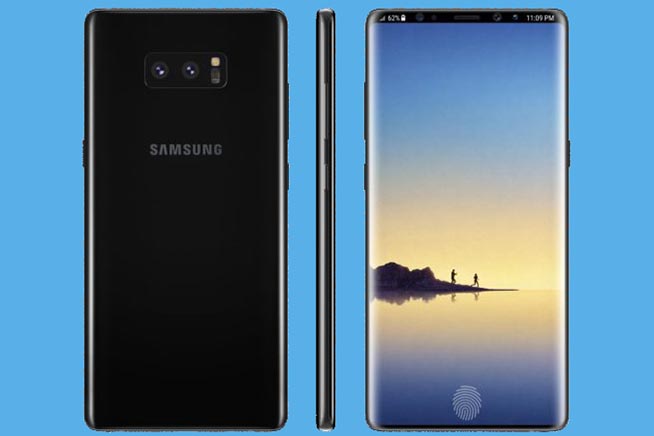 Fonte foto: Venya Geskin
Fonte foto: Venya Geskin
Samsung Galaxy Note 9
Se il Samsung Galaxy 9 potrebbe essere una sorta di smartphone di transizione, il Note 9 potrebbe avere molte nuove funzioni che l’azienda sudcoreana svilupperà da qui fino a fine agosto 2018, quando il device probabilmente verrà presentato. Mettendo da parte il comparto hardware (chipset Exynos, 6GB di RAM e 128GB di memoria interna), la grande novità potrebbe essere il sensore per le impronte digitali nascosto sotto lo schermo. Grandezza dello schermo compresa tra i 6.3-6.5 pollici.
Google Pixel 3
![]() Fonte foto: Web
Fonte foto: Web
Google Pixel
Della lista degli smartphone più attesi del 2018, il Google Pixel è molto probabilmente quello che uscirà più tardi. Come accade da oramai da qualche anno l’azienda di Mountain View lancia i suoi telefonini nel mese di ottobre. Il Pixel 3 potrebbe uscire in tre diverse versioni, che si differenziano per la grandezza dello schermo. Potrebbe essere confermato il modello con design “classico” (come il Pixel 2) affiancato da due smartphone borderless (uno come il Pixel 2 XL e uno con schermo più grande). L’hardware dovrebbe basarsi sul chipset Snapdragon 845 accompagnato da 4/6GB di RAM e da 64/128GB di memoria interna. On the premium models likely the presence of a dual rear camera (first time for the Google Pixel).
Folding smartphones
Folding smartphones deserve a separate discussion. Will we see them in 2018? It's still too early to tell, rumors are mixed and most likely we'll have to wait for 2019. Per il momento le aziende più avanti nel progetto sono Samsung, Huawei, LG e Apple.
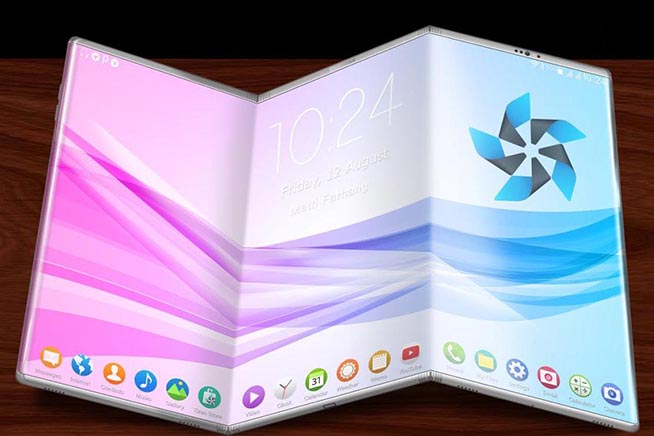 Fonte foto: ConceptPhone
Fonte foto: ConceptPhone
Samsung Galaxy X
L’azienda coreana ha fatto trapelare che lo smartphone pieghevole verrà denominato Galaxy X e vedrà la luce tra la fine del 2018 e l’inizio del 2019. Online sono apparsi diversi rendering e Samsung ha ottenuto anche alcuni brevetti dall’Ufficio statunitense che attestano il lavoro che l’azienda sta facendo per far uscire al più presto il Galaxy X.
Anche Huawei, per voce dell’amministratore delegato dell’azienda, ha annunciato di aver pronto già un prototipo dello smartphone pieghevole. Ma ci sono ancora dei problemi per quanto riguarda l’ottimizzazione del secondo schermo. Uscita prevista tra la fine del 2018 e l’inizio del 2019.
Apple ed LG stanno lavorando su un dispositivo flessibile. Insieme. In fact, the Cupertino-based company would use the flexible panels made by the South Korean company for its foldable smartphone. Some rumors talk about the release of the iPhone X Plus with flexible screen as early as 2018, but it seems very difficult that Apple is already ready for such a major change. So everything postponed to 2019? Very likely.
